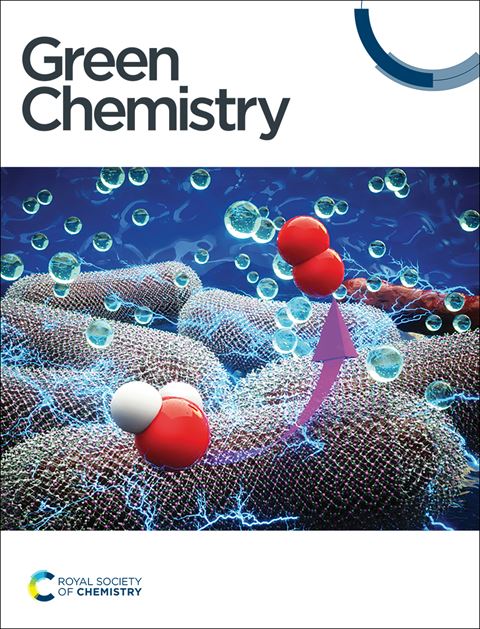Catalyst- and solvent-free, atom- and step-economical synthesis of dithiophosphinates by one-pot domino introduction of sulfur atoms†
IF 9.3
1区 化学
Q1 CHEMISTRY, MULTIDISCIPLINARY
引用次数: 0
Abstract
A catalyst-free and solvent-free domino-multicomponent reaction of diphenylphosphine, S8 and alkenes was developed, providing a simple, green, and efficient synthesis of dithiophosphinates with up to >99/1 Markovnikov regioselectivity and 100% atom economy. Notably, by introducing two sulfur atoms with the easily available S8, this new method allows the construction of S–C–PS with four chemical bonds in one pot, showing incomparable advantages over the reported multi-step methods both in product yield and reaction selectivity. Various alkenes including monosubstituted, disubstituted, trisubstituted and tetrasubstituted alkenes and even polyisoprene are suitable substrates, showing broad substrate scope. The method can be readily extended to alkynes and easily scaled up to the gram scale, showing the practicality of this new method. Mechanistic studies suggested that both the rapid generation of the key diphenyl phosphinodithioic acid intermediate and the electrophilic addition step contributed to the high yield and the excellent selectivity of the reaction.
无催化剂和无溶剂,原子和步骤经济合成二硫代膦通过一锅多米诺引入硫原子†
研究了二苯基膦、S8和烯烃的无溶剂无催化剂多组分反应,提供了一种简单、绿色、高效的合成二硫代膦酸盐的方法,Markovnikov区选择性高达99/1,原子经济性100%。值得注意的是,通过引入两个硫原子和容易获得的S8,这种新方法可以在一个锅中构建具有四个化学键的S-C-PS,在产物收率和反应选择性方面都比已有的多步方法具有无可比拟的优势。单取代、二取代、三取代、四取代的各种烯烃甚至聚异戊二烯都是合适的底物,显示出广泛的底物范围。该方法可以很容易地扩展到炔类,并且很容易缩放到克尺度,表明了新方法的实用性。机理研究表明,关键的二苯基膦二硫代酸中间体的快速生成和亲电加成步骤是该反应收率高、选择性好的原因。
本文章由计算机程序翻译,如有差异,请以英文原文为准。
求助全文
约1分钟内获得全文
求助全文
来源期刊

Green Chemistry
化学-化学综合
CiteScore
16.10
自引率
7.10%
发文量
677
审稿时长
1.4 months
期刊介绍:
Green Chemistry is a journal that provides a unique forum for the publication of innovative research on the development of alternative green and sustainable technologies. The scope of Green Chemistry is based on the definition proposed by Anastas and Warner (Green Chemistry: Theory and Practice, P T Anastas and J C Warner, Oxford University Press, Oxford, 1998), which defines green chemistry as the utilisation of a set of principles that reduces or eliminates the use or generation of hazardous substances in the design, manufacture and application of chemical products. Green Chemistry aims to reduce the environmental impact of the chemical enterprise by developing a technology base that is inherently non-toxic to living things and the environment. The journal welcomes submissions on all aspects of research relating to this endeavor and publishes original and significant cutting-edge research that is likely to be of wide general appeal. For a work to be published, it must present a significant advance in green chemistry, including a comparison with existing methods and a demonstration of advantages over those methods.
 求助内容:
求助内容: 应助结果提醒方式:
应助结果提醒方式:


